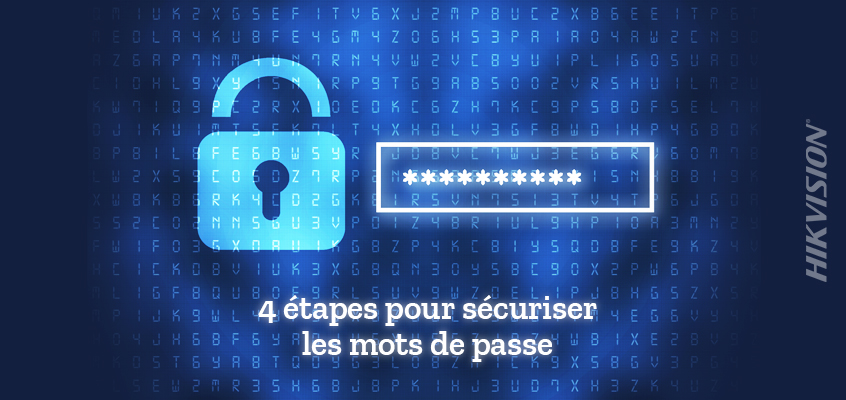4 étapes pour sécuriser davantage les mots de passe selon le directeur principal de la cybersécurité de Hikvision

Hikvision sur la prévention des piratages de mots de passe avec un gestionnaire de mots de passe
Alors que nous clôturons l’édition annuelle de la sensibilisation à la cybersécurité (NCSAM), l'un des meilleurs moyens de rester en sécurité en ligne et d'éviter d'être piraté est de conserver des mots de passe complexes et plus sécurisés. Le directeur principal de la cybersécurité de Hikvision, Chuck Davis, décrit ci-dessous quatre étapes pour améliorer les mots de passe afin de vous aider à rester cybersécurité.
4 étapes pour des mots de passe plus faciles et plus sécurisés
Les mots de passe continuent d'être l'une des parties les plus détestées de l'informatique. Non seulement ils sont ennuyeux pour nous tous qui devons les utiliser, mais ils ont également tendance à être un moyen courant de violer les ordinateurs et les services en ligne.
Vous trouverez ci-dessous quatre conseils sur les mots de passe avec des liens utiles qui vous faciliteront la vie et beaucoup plus sécurisés en matière d'authentification :
- Activez l'authentification multifacteur (AMF) partout où vous le pouvez. Cela protégera votre compte même si un attaquant obtient votre mot de passe. L'authentification multifacteur ajoute au moins deux éléments de preuve ou facteurs vérifiables au processus d'authentification pour réduire considérablement les problèmes de sécurité en réduisant les chances d'accès à un compte par la mauvaise personne.
- Ne réutilisez jamais les mots de passe. La réutilisation des mots de passe augmente considérablement les chances que votre compte soit compromis par une attaque de bourrage d'informations d'identification.
- Inscrivez-vous à “Have I Been Pwned?”?» vous êtes donc alerté si votre adresse courriel apparaît dans une violation de données. Il s'agit d'un service gratuit et il vous alertera souvent d'une violation avant que le fournisseur ou le site Web ne vous contacte.
- Utilisez un gestionnaire de mots de passe. Étant donné que nos mots de passe doivent tous être longs et uniques, il est déraisonnable d’attendre que quiconque se souvienne de tous les mots de passe qu’une personne ordinaire doit utiliser. L'utilisation d'un gestionnaire de mots de passe vous soulagera de ce fardeau car vous pouvez stocker tous vos mots de passe dans le gestionnaire de mots de passe et vous n'aurez à vous souvenir d'aucun d'entre eux. Les gestionnaires de mots de passe peuvent également saisir automatiquement vos mots de passe dans les sites Internet pour vous.
Un gestionnaire de mots de passe est un outil logiciel utilisé pour stocker tous vos mots de passe dans un fichier crypté afin que vous, et personne d'autre, y ayez un accès très facile, contribuant ainsi à minimiser les problèmes de sécurité. Cela peut également réduire le risque de piratage de mot de passe.
Pour en savoir plus sur la cybersécurité de Hikvision, cliquez ici.
